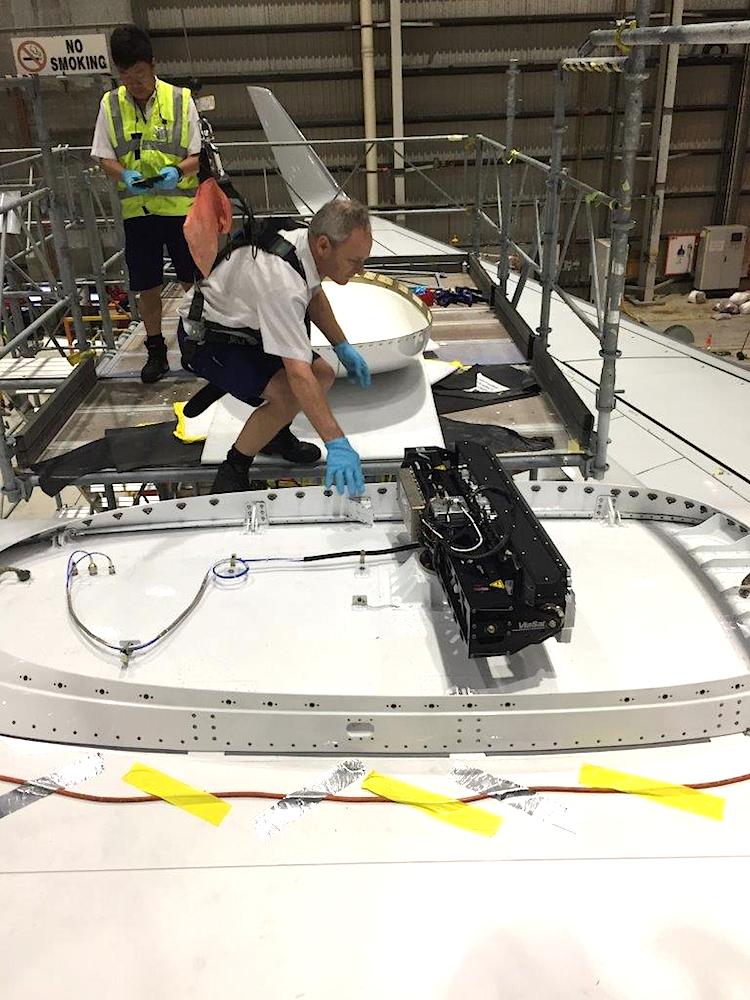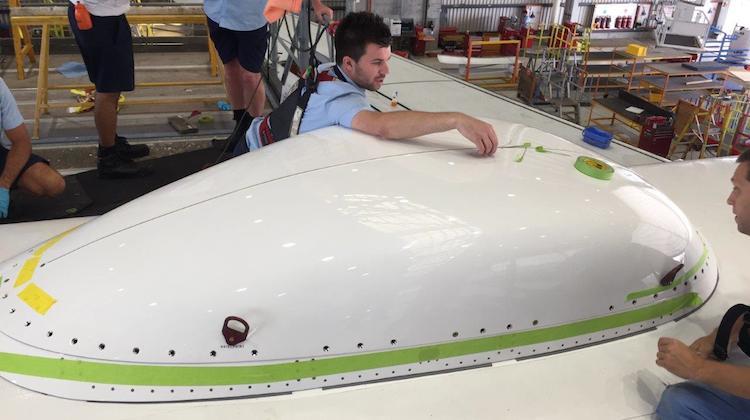
Qantas has completed the installation of internet wifi equipment on board a Boeing 737-800 ahead of customers being able to use the service “early next year”.
The 737-800, VH-XZB, was fitted with a satellite antenna, multiple wireless access points in the cabin and other hardware at Qantas’s Brisbane engineering base. The airline said it took 10 engineers about 900 man hours, or 12 working days, to complete the task, with flight tracking websites showing the aircraft was on the ground between October 16 and November 9.
During that time, it was understood VH-XZB also had an extra row of economy class seats added as part of a reconfiguration of Qantas’s 737 fleet.
While the aircraft has returned to service, it will fly with the wifi turned off for passengers “for a few months”, as it conducts further ground and inflight tests with its technology parter ViaSat.
The wifi system was expected to be turned on for customers “early next year”, Qantas said on Tuesday.
“Putting wifi on board the aircraft has been an extraordinary task for the team,” Qantas head of customer experience Phil Capps said in a statement.
“It requires a significant amount of testing to ensure that, first and foremost, the safety of the installation meets Qantas’ stringent standards, as well as ensuring the system will deliver the level of performance we expect at this stage of the trial.
“While we know that customers will want to connect to the wifi, we really do appreciate their patience while we go through our final testing process. We’re just as excited as them to roll this out.”



Qantas announced in February plans to equip its domestic fleet of Boeing 737-800s and Airbus A330s with internet wifi, with connectivity to be provided by ViaSat’s global satellite network and the National Broadband Network’s Sky Muster satellites.
The oneworld alliance member planned to offer the service free for all passengers.
Qantas chief executive Alan Joyce has said previously the satellites, which use the high capacity Ka-band, would deliver internet speeds 10 times faster than conventional on-board wifi.
The airline was also considering offering wifi on regional and international aircraft.
Capps said the hardware installation moved the airline a step closer to the introduction of the technology, with the hardware fitout of the domestic fleet of 737s and Airbus A330 widebodies planned to begin in mid-2017 and be completed some time in 2018.
“Customers with a keen eye will be able to spot the satellite antenna, which is housed in a streamlined fibreglass radome on top of the fuselage, towards the rear of the aircraft,” Capps said.
Separately, Air New Zealand announced its October international and domestic jet fleet would be progressively equipped with wifi from 2017 utilising the Inmarsat new global GX satellite constellation.
And Virgin Australia said in July it would offer internet connectivity on its 737, 777-300ER and A330 fleet from mid-2017. However, the carrier was yet to announce details about the technology it would use, the pricing model and any potential partners for the service.
In related news, the NBN’s Sky Muster II satellite was successfully launched into space in October.
Launched 36,000km into space by Arianespace at the Guiana Space Center in Kourou, French Guiana, South America, Sky Muster II joins Sky Muster I in providing high-speed internet to the Australian continent as well as Norfolk, Christmas, Macquarie and Cocos islands. The satellites were also earmarked for delivering on-board wifi for Qantas.










